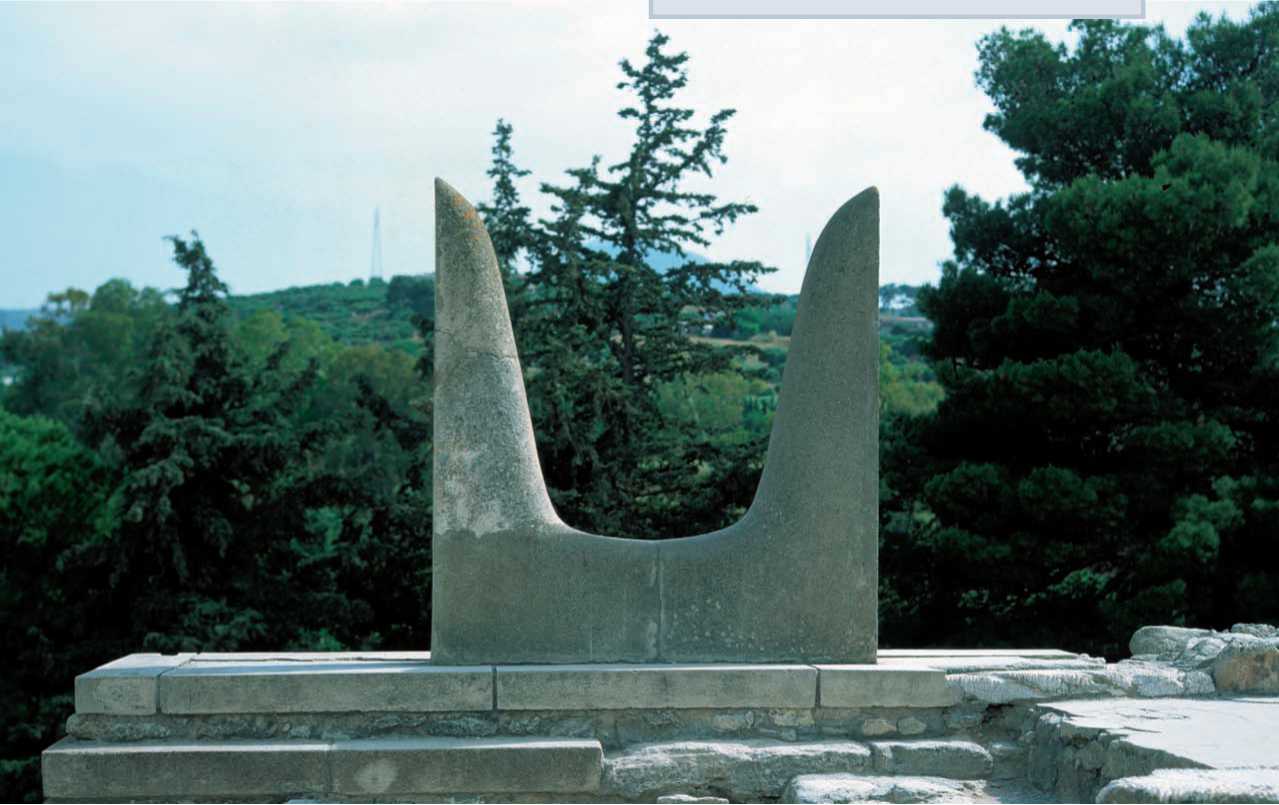Below: This photograph shows a throne at the palace of Knossos on Crete, the legendary home of King Minos.

In Greek mythology Minos was the semidivine ruler of an empire based on the island of Crete. Although he is most famous for forcing the Athenians to send a small group of youths to Crete, where they were fed to a monster known as the Minotaur, Minos was viewed by some as a wise and just king.
Minos was the son of Zeus, ruler of the gods, and Europa, a beautiful Phoenician princess. Zeus lusted after Europa and transformed himself into a bull to carry the princess away to Crete. There, according to most versions of the story, she bore him three sons—Minos, Rhadamanthys, and Sarpedon— although Greek poet Homer (c. ninth-eighth century BCE) does not cite Sarpedon as Minos’s brother. After Zeus left the island, Europa married the Cretan king Asterius, who raised the three boys as his own. When they were young men, all three of the brothers fell in love with Miletus, a semidivine son of Apoho. They quarreled over Miletus and, in some accounts, Minos expelled his brothers from the island forever.
Below: This sculpture of a pair of bull horns is located at the palace of Knossos on Crete. Bulls featured prominently in Cretan religion.

With his brothers banished, Minos ascended the Cretan throne unchallenged on the death of Asterius. Still, he felt the need to demonstrate to his Cretan subjects that the gods wanted him to be king, so he prayed for a divine sign that would publicly acknowledge his right. Poseidon, god of the sea, answered Minos’s prayer and sent a beautiful bull from out of the waves. Poseidon made Minos promise that once all the Cretans had recognized the significance of the bull, Minos was to sacrifice the animal to the sea god. However, when the bull appeared and Minos was universally proclaimed king, he ignored Poseidon’s instructions. Some versions claim that he could not bring himself to kill the bull because the creature looked so majestic. Others say that the bull reminded him of the form Zeus took when he wooed Europa, and that he could not kill something that resembled his own father. Whatever the reason, instead of sacrificing Poseidon’s bull, Minos killed
Minoan Worship
Cretan, or Minoan, influence may be seen in many Greek myths. For example, ancient Greeks believed that in order to protect the infant Zeus from being devoured by his father, Cronus, his mother, Rhea, hid the divine baby in a cave on Mount Dicte in Crete, where he was raised by nymphs. Caves were of great significance to Minoans: within them they seem to have practiced a religious cult celebrating fertility gods. Numerous votive offerings have been found in such locations—these were usually in the form of domesticated animals such as sheep, goats, and bulls, but in one particular cave a large cache of turtles was excavated.
Minoans also worshiped their gods in sanctuaries and at altars on the tops of mountains. The altars, built in the form of stylized bull horns, marked the location of cave sanctuaries; the bull horns topped the peak sanctuary building as well. However, modern archaeologists have not yet been able to ascertain the exact forms of worship that took place in these isolated sacred sites.

Right: This Roman floor mosaic from the fourth century CE depicts Greek hero Theseus fighting the Minotaur in the Labyrinth.
The best bull from his own herd. This did not satisfy Poseidon. On the contrary, the sea god viewed Minos’s failure as blasphemy, and he swore revenge.




 World History
World History









